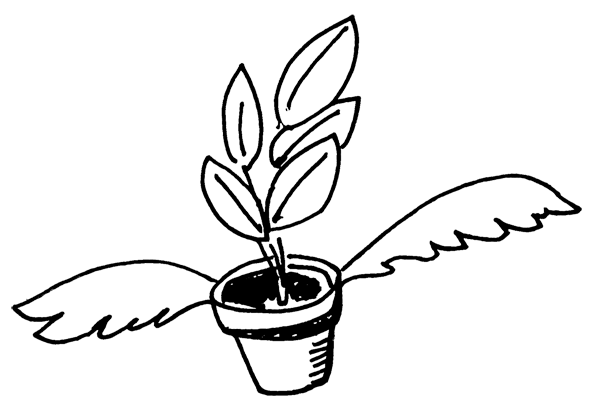
RELEASE
TUTORIALS

Best Practices for Applying Beneficial Insects
*WE’RE UPDATING OUR RELEASE TUTORIALS!
Check back for new videos, written instructions, new beneficial insects and more. In the meantime, follow us on our socials and drop a post or send a message with any questions you have about releasing beneficials. – the DMVb Team
Application Instructions
(click to expand printer-friendly versions)
Applying Predators in a Carrier Substrate
Preparing your plants
Before your bugs arrive, it’s always a good idea to water your plants. The bugs will be thirsty after their long trip, and having some moisture on the plants will really help them.
Before you apply the beneficials, you should also rinse off the plant or at least wipe the leaves and stems with a damp rag or paper towel.
Preparing your predators
Before you open the bottle or bag, tilt and rotate it a few times to help distribute the predators throughout the substrate. The bugs might have settled to the bottom or one of the sides during transport, so this will help you apply everything more evenly to your plants.
Distributing your predators
Method 1: Directly in the pot
You can pour the substrate directly on the soil and even on the leaves if they’re large enough. Try to pour it evenly around the plant to discourage the larvae from congregating in one spot.
After a few days, you can scoop or tip the substrate out of the soil, or you can just leave it there if you prefer – that’s up to you, but it won’t harm your plants.
Method 2: Containers
If you’ve got a hydro or semi-hydro setup, or if you just don’t like the carrier substrate in your pots, you can pour the carrier substrate into a reusable or disposable container.
Some people like to use paper or silicone cupcake liners, the lids to jars, egg cartons – anything small and cuplike.
You can also use Universal Release Boxes from us which have hooks on them and allow you to distribute predators supplied in a carrier substrate more easily throughout the foliage.
The bugs will disperse and you can dispose of the substrate in
a few days.
Applying Predators in a Carrier Substrate
Preparing your plants
Before your bugs arrive, it’s always a good idea to water your plants. The bugs will be thirsty after their long trip, and having some moisture on the plants will really help them.
Before you apply the beneficials, you should also rinse off the plant or at least wipe the leaves and stems with a damp rag or paper towel.
Preparing your predators
Before you open the bottle or bag, tilt and rotate it a few times to help distribute the predators throughout the substrate. The bugs might have settled to the bottom or one of the sides during transport, so this will help you apply everything more evenly to your plants.
Distributing your predators
Method 1: Directly in the pot
You can pour the substrate directly on the soil and even on the leaves if they’re large enough. Try to pour it evenly around the plant to discourage the larvae from congregating in one spot.
After a few days, you can scoop or tip the substrate out of the soil, or you can just leave it there if you prefer – that’s up to you, but it won’t harm your plants.
Method 2: Containers
If you’ve got a hydro or semi-hydro setup, or if you just don’t like the carrier substrate in your pots, you can pour the carrier substrate into a reusable or disposable container.
Some people like to use paper or silicone cupcake liners, the lids to jars, egg cartons – anything small and cuplike.
You can also use Universal Release Boxes from us which have hooks on them and allow you to distribute predators supplied in a carrier substrate more easily throughout the foliage.
The bugs will disperse and you can dispose of the substrate in
a few days.
Applying Lacewings in a Hexcell
Preparing your plants
Before your bugs arrive, it’s always a good idea to water your plants. The bugs will be thirsty after their long trip, and having some moisture on the plants will really help them.
Before you apply the beneficials, you should also rinse off the plant or at least wipe the leaves and stems with a damp rag or paper towel.
Peel back the film
Tap one side of the hex cell so that the majority of the lacewing larvae are sitting on the opposite film. Carefully peel back the film that is facing up (it may require some effort, but don’t give up!). Peel the film back until a few cells are open.
Tap the lacewings out
Flip the hex cell over and position it over the plant(s). Forcefully tap the unpeeled side of the hex cell to evict the lacewing larvae. Check the inside of the opened cells to ensure all of the lacewing larvae have been evicted, then repeat by peeling back more of the film.
If you would like a more controlled release, tap the lacewing larvae onto a piece of paper and release the lacewing larvae onto the leaves.
White or green flakes are also likely to fall onto your plants – those are lacewing larvae eggs. White eggs indicate they have hatched and green eggs indicate they are unhatched.
Optional Method: Bin/Container
One option for containing the release is to apply the lacewing larvae to plants in a bin, tote, box, or bathtub.
Leave the hexcell near some of your plants
Once the majority of the lacewing larvae have been released from the hex cell, leave it near a couple of plants. There’s guaranteed to be a few lacewing larvae and unhatched eggs in the cells, so they’ll be able to crawl out in the next couple of days.
Throw away the hex cell after about five days.
Mite Sachet Application Instructions
Preparing your plants
Before you apply the beneficials, you should also rinse off the plant or at least wipe the leaves and stems with a damp rag or paper towel.
Hanging your sachets
Do not puncture or open the sachets and spread the contents on plants! Hang your sachets evenly throughout your plants using the hook attached to the sachet, concentrating sachets on pest hotspots. Each sachet already has a hole for the mites to crawl out.
The sachets are designed to host developing beneficial mites with the right conditions, including humidity and food, and the eggs and larvae may die off if the sachet is opened. For the same reason, don’t get them wet. The moisture can interrupt their development.
Using Lacewing Egg Cards
Receiving your predators
If you cannot separate and distribute each egg card immediately, set the entire card on a plant so that any hatchlings have a place to go. They hatch more slowly than bottled eggs, so you have some time to distribute the cards.
Do not refrigerate your eggs on receipt.
Preparing your predators
Be gentle when receiving your egg cards, each egg is glued to the surface of the card. Try not to touch the side of the card with the eggs on it.
Separate each card using scissors or by gently ripping/pulling apart along the perforations.
Be careful if you crease the cards to help separate so you do not crush the eggs.
How they work
Egg cards will start hatching within 1-2 days and continue over the next 2 weeks.
Eggs will come small and light in color, turn brighter green and larger as they are ready to hatch, and then finally white in color after hatching.
Where to place cards
Hang the egg card on each plant you’d like to protect, place it in the pot egg side up, or set it on top of a leaf.
Make sure the eggs are not in direct sunlight for extended periods of time. If treating multiple small plants in a cabinet, shelf, or cluster you can place the egg card on the surface in between each plant.
Protect the egg cards from ants, as they will seek out the lacewing eggs and new emergents and eat them.
Remove after about 2 weeks – the egg card should have no eggs left on it.






